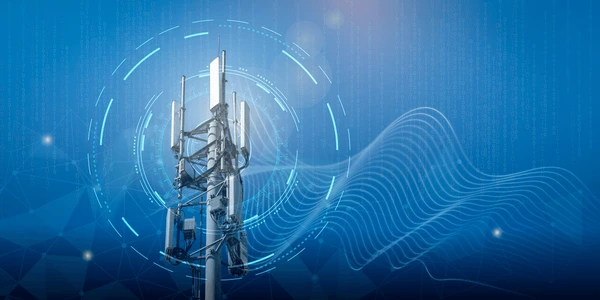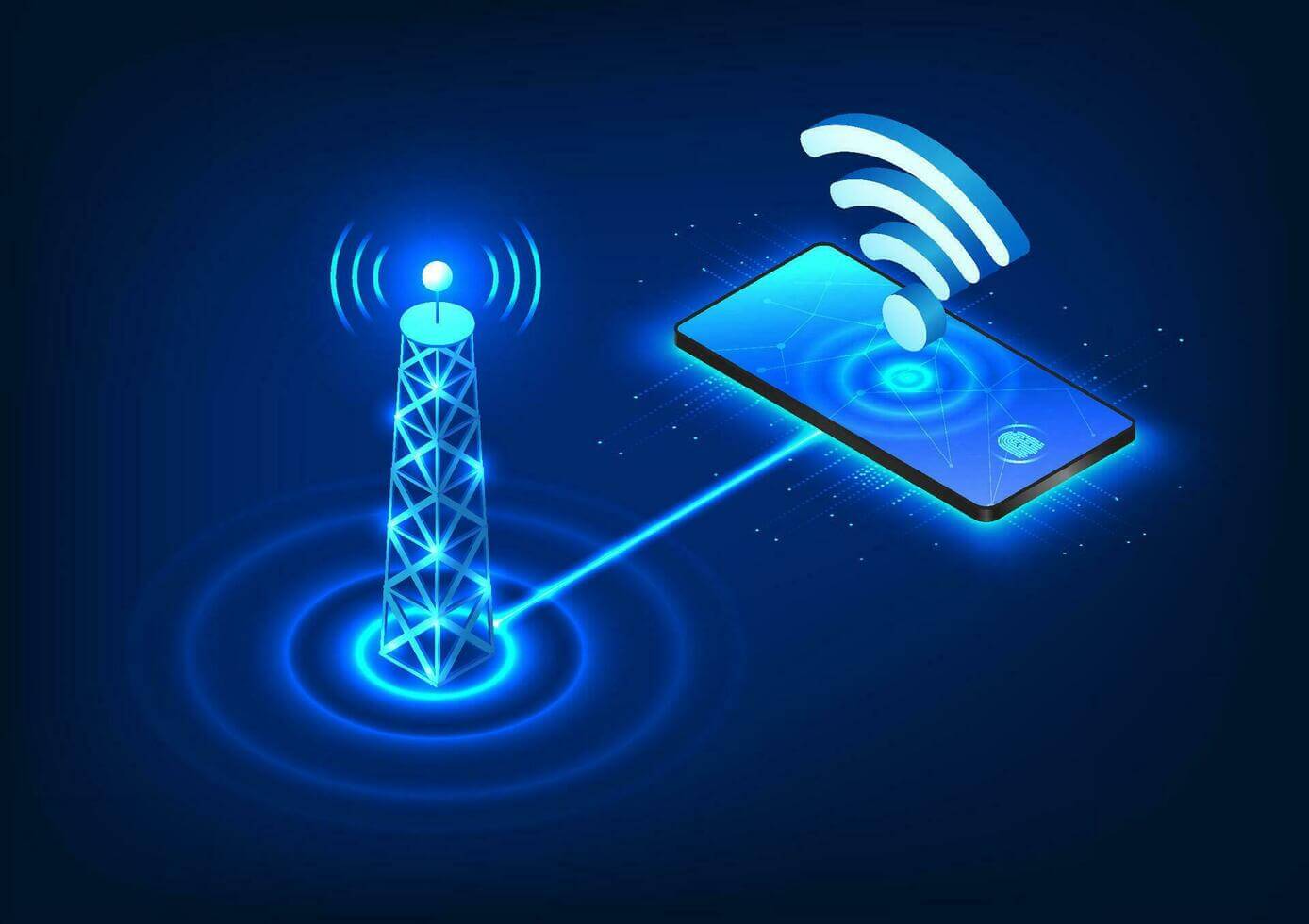
When you tap your screen to send a message, make a call, or load a website, you’re initiating a high-speed, invisible relay race that begins and ends with a cell tower. These towering structures are far more than physical landmarks on highways and rooftops — they are sophisticated communication hubs that form the backbone of our mobile networks.
Understanding how cell towers work means looking at both the physical transmission of signals and the massive infrastructure behind the scenes that keeps modern communication running smoothly.
What Happens When You Use Your Phone?
Let’s take a real-world example. You open a browser and load a website.
Your phone instantly converts that action into a radio frequency signal. That signal is transmitted through the air and picked up by the nearest cell tower, often within a range of 500 meters to several kilometers. Once the tower receives your signal, the process continues nearly instantaneously.
From there, the tower sends your data request via high-speed fiber optic cables (or in some areas, microwave links) to a centralized mobile core network, which acts like a digital traffic director. It routes the request out to the internet, fetches the website, and returns the information the same way it came—back to your phone, through the tower, and displayed on your screen.
This entire process, from phone to tower to internet and back, typically happens in under 100 milliseconds.
How Cell Towers Talk to Phones
The radio signal from your phone doesn’t just travel aimlessly; it’s targeted and encoded for maximum efficiency. Your phone and the cell tower negotiate a specific frequency and timing slot for communication, based on protocols like LTE or 5G NR (New Radio).
The tower uses antennas arranged in sectors—usually three per tower—to manage directional coverage. As you move around, say in a car or on foot, your phone monitors the strength of nearby signals and seamlessly hands off communication to the next tower with better coverage. This is called a handover, and it happens constantly during mobile use—without you even noticing.
Modern cell towers use beamforming and MIMO (Multiple Input Multiple Output) technologies to strengthen connections and handle multiple users simultaneously. Your phone’s signal is bundled with others and intelligently managed to prevent interference while ensuring stable service.
Calls, Texts, and Mobile Data: What’s Actually Being Transmitted?
Despite the differences in what you’re doing—talking, texting, or browsing—it all comes down to data.
- Phone calls: Converted into digital audio packets and sent over the tower as data (VoLTE in 4G or VoNR in 5G).
- Text messages (SMS): Sent via a control channel that runs parallel to your data connection.
- Mobile data: Broken into thousands of small packets and routed through the cell tower to the internet, then back to your device.
All of this is encoded, encrypted, and decoded by the baseband processor inside your phone and the baseband unit (BBU) at the tower site.
Signal Transmission: From Phone to Tower in a Fraction of a Second
The first step in this process is your phone converting your voice or data into radio waves. These waves travel through the air and are picked up by the nearest cell tower’s antenna array. But how fast does this all happen?
The actual transmission of radio waves from your phone to a nearby tower — typically a few hundred meters to a few kilometers away — happens at the speed of light, or roughly 300,000 kilometers per second. That means the signal takes only a few microseconds to milliseconds to reach the tower.
Once the tower receives the signal, it’s not just a simple relay. The base station equipment (often located in a cabinet at the base of the tower or housed in a nearby building) begins digital signal processing. This includes demodulating the signal, checking for errors, authenticating your device, and managing network protocols. These steps typically occur in under 100 milliseconds, ensuring the latency remains imperceptible for most phone activities. For data-intensive applications like streaming or online gaming, modern networks aim for end-to-end latency below 50ms, with 5G targeting sub-10ms latency.
Behind the Scenes: What’s Actually on a Cell Tower?
At a glance, a cell tower might look like a few metal beams and some antennas, but it’s far more complex under the hood.
The upper portion of the tower typically holds sectorized antennas, which divide the coverage area into multiple zones (often three sectors per tower, each spanning 120 degrees). These antennas handle both the uplink (from your phone to the tower) and downlink (from the tower to your phone) frequencies, using advanced technologies like beamforming to focus energy more efficiently.
Down at the base, or nearby, you’ll find the baseband unit (BBU) and radio unit (RU). The BBU manages the digital aspects of signal processing and interacts with the mobile network’s control systems. The RU deals with the radio signals directly and usually sits closer to the antennas, sometimes even integrated into them in newer, compact 5G deployments.
This entire stack requires constant power, sophisticated cooling systems, and extremely stable network connections to the broader internet — known as backhaul.
The Overhaul: How Towers Stay Functional and Evolve
Cell towers are not static installations. They require frequent maintenance and periodic overhauls to keep up with growing user demands and technological advancements.
Routine inspections check for corrosion, wear on cables, power system health, and performance of backup batteries or generators. Software updates for baseband units are pushed remotely, often during low-traffic hours, similar to how smartphones receive operating system updates.
However, full-scale upgrades are common when new technologies roll out. During the transition from 4G to 5G, many existing towers had to be retrofitted with new antenna panels capable of handling higher frequencies, such as those in the sub-6 GHz and millimeter wave (mmWave) bands. In many urban areas, entirely new small cell towers were deployed to address 5G’s shorter signal range.
These upgrades are logistically complex. They often involve permits, physical construction, integration testing, and calibration of transmission parameters — all while ensuring ongoing service to connected users.
Capacity and Traffic Management
Perhaps one of the most impressive aspects of cell towers is how they manage thousands of simultaneous connections in real time.
Each tower operates across multiple frequency bands licensed by carriers, and these are divided into channels to serve different users and tasks. Modern towers, especially those supporting LTE and 5G, use technologies like MIMO (Multiple Input, Multiple Output) and carrier aggregation to boost efficiency. This allows towers not just to handle more users but to adapt bandwidth dynamically based on demand.
If a tower becomes congested — for instance, during a concert or disaster — the network may trigger load balancing, offloading users to neighboring cells when possible. In dense areas, additional infrastructure like mobile cell towers or deployable COWs (Cells on Wheels) can be brought in temporarily.
Connection Handover and Mobility
As users move — walking, driving, or riding in a train — their phones constantly monitor signal strength and network quality. When your phone detects a stronger signal from a nearby tower, it prepares for a handover. This is a delicate process that must occur without interrupting your call or data session.
The handover can be hard (dropping the first connection before making the next) or soft (temporarily maintaining connections to both towers for a seamless switch). Modern LTE and 5G networks are optimized for seamless mobility, even at highway speeds or in crowded cities.
Resilience and Redundancy
Given how crucial mobile connectivity has become, cell towers are built with resilience in mind. They often feature:
They typically include battery backups for short-term power outages, diesel generators to handle extended blackouts, and redundant network routes to reduce the risk of backhaul failure.
Despite these precautions, towers can still go down during natural disasters. In such cases, mobile providers act quickly by deploying temporary infrastructure such as drones, high-altitude balloons like Google’s Project Loon, and portable towers to restore service as fast as possible.
Final Thoughts
Cell towers are more than steel structures with antennas. They’re highly engineered hubs that handle vast volumes of data, maintain precise timing, manage interference, and adapt in real-time to user movement and traffic. Their processing happens in milliseconds, but the planning, maintenance, and evolution of these towers reflect decades of engineering refinement and innovation.
As we continue to push the boundaries of wireless communication — from 5G to emerging 6G research — cell towers will remain the essential, evolving gateways that keep us connected in an increasingly mobile world.

